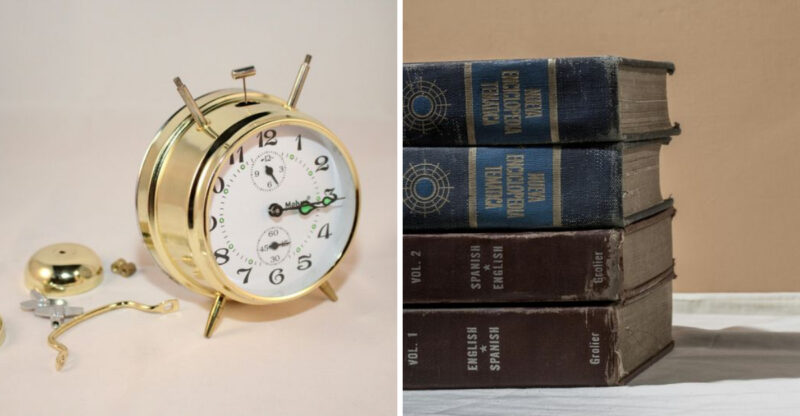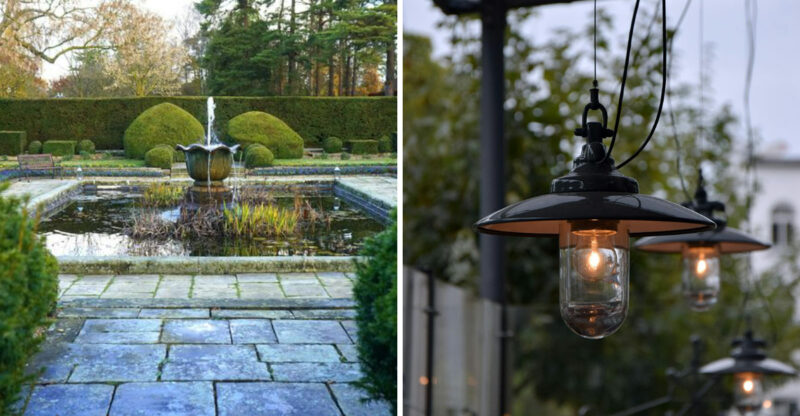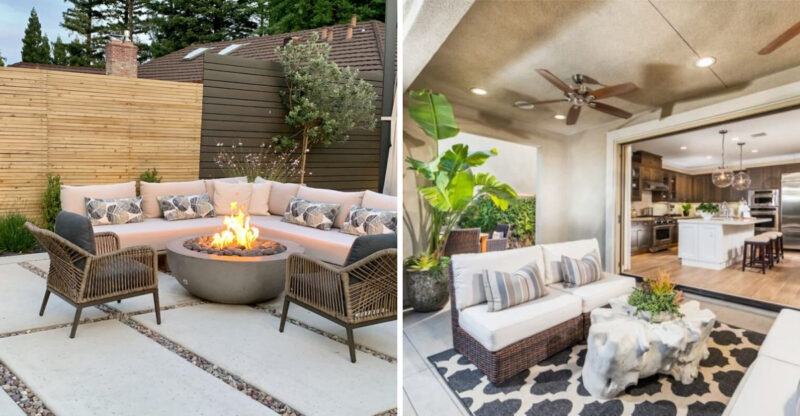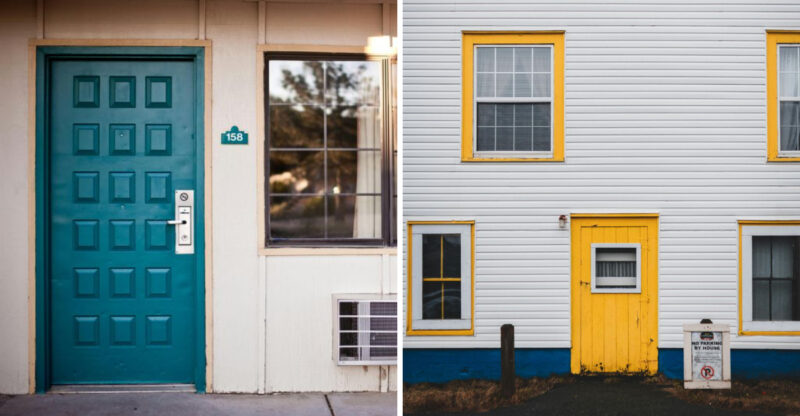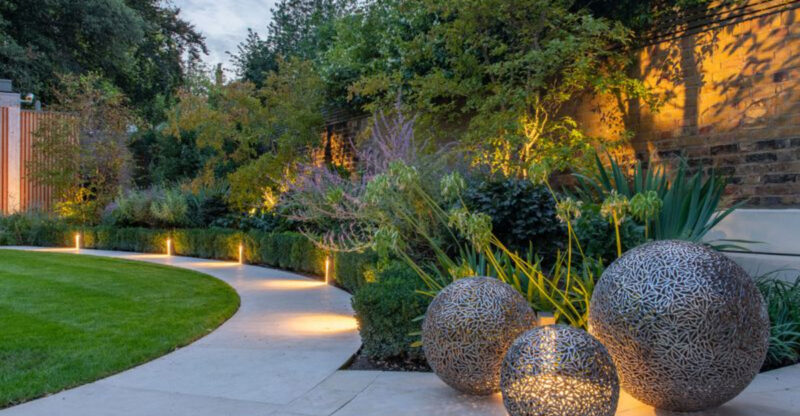7 Porch Design Flaws That Could Annoy Designers And 6 Options They May Love

Porches are the first impression of your home, a space where design choices really matter.
Professional designers often notice small details that can make or break the overall look and feel of this outdoor area.
Understanding what works and what doesn’t can help you create a porch that’s both beautiful and functional, whether you’re planning a renovation or just want to refresh your outdoor space.
1. Cluttered Seating Areas
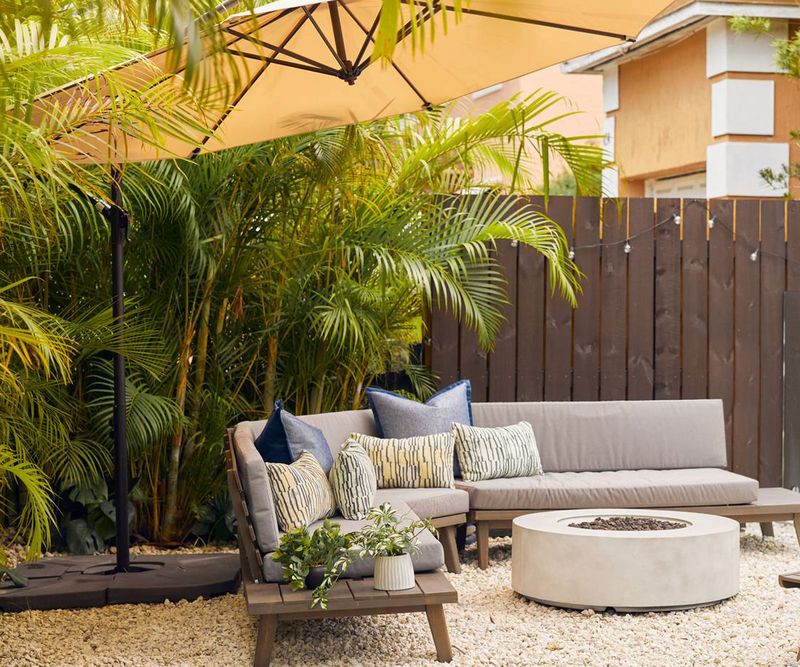
Nothing makes designers cringe faster than a porch where you can barely move between furniture pieces. When seating areas become obstacle courses, both function and style suffer dramatically.
Designers recommend allowing at least 3 feet of walking space between furniture pieces. This breathing room creates natural flow and makes the porch feel more spacious, even when it’s not particularly large.
If your porch feels cramped, consider removing a piece or two rather than squeezing everything in. Sometimes less truly is more, especially in outdoor spaces where people need room to stretch out and relax after a long day.
2. Peeling Paint
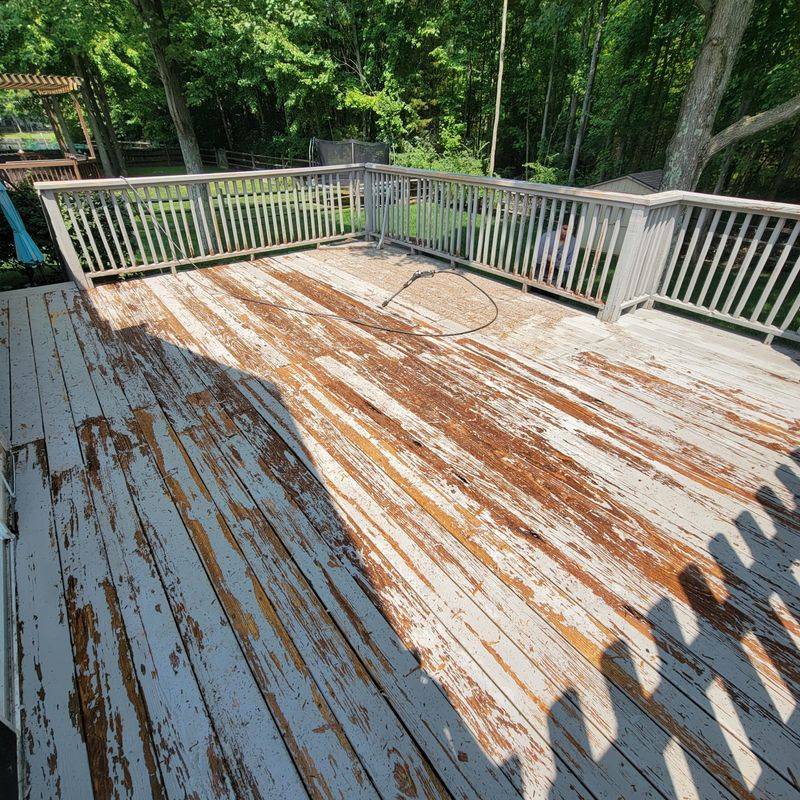
Peeling paint on porch surfaces sends designers running for cover! This common problem occurs when moisture gets trapped between paint layers, causing unsightly bubbling and flaking that ruins the entire porch aesthetic.
Weather exposure makes porches particularly vulnerable to paint failure. Professionals know that proper preparation is key sanding, priming, and using exterior-grade paint designed specifically for your climate can prevent premature peeling.
Regular maintenance goes a long way too. Simply touching up small problem areas before they spread can save you from a complete repaint job. Many designers recommend scheduling an annual porch inspection to catch peeling paint early.
3. Overcrowded Planters
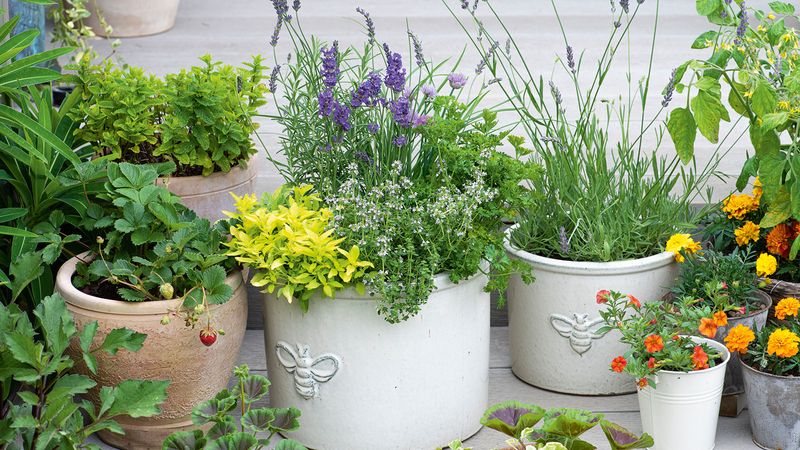
Plants breathe life into porches, but cramming too many into one container makes designers wince. Overcrowded planters create a messy, chaotic look rather than the lush, intentional design you’re aiming for.
When plants compete for space, nutrients, and water, none of them thrive. You’ll end up with leggy, stressed plants instead of the gorgeous greenery you envisioned. Professional designers follow the “thriller, filler, spiller” rule one tall statement plant, a few medium fillers, and trailing plants to cascade over edges.
Are your planters already overcrowded? Don’t panic! Simply divide and repot some plants into additional containers, creating a coordinated collection that gives each plant room to shine.
4. Worn-Out Outdoor Rugs
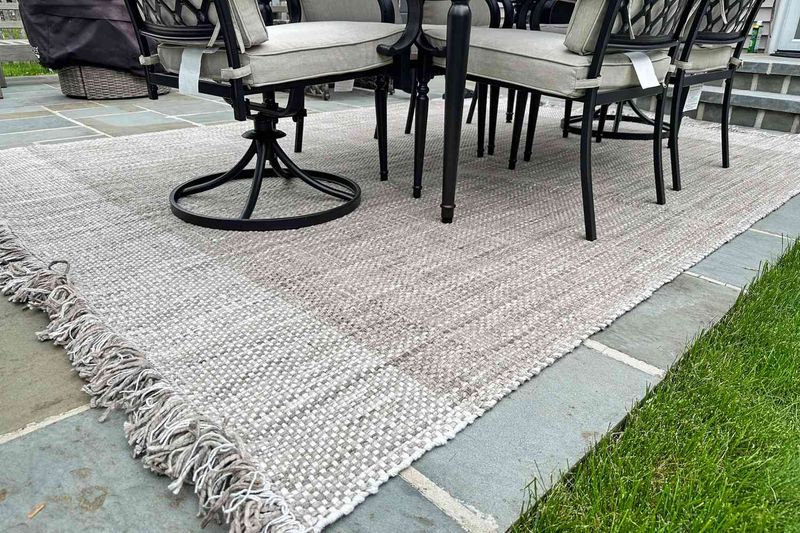
Faded, fraying outdoor rugs make designers shake their heads in dismay. Though they start beautiful, many outdoor rugs quickly become eyesores when exposed to sun, rain, and foot traffic.
Quality matters tremendously with outdoor textiles. Designers recommend polypropylene rugs specifically manufactured for outdoor use, as they resist fading, mold, and moisture damage far better than natural fibers. Even high-quality rugs need protection storing them during harsh weather seasons extends their life substantially.
Did you know outdoor rugs need regular cleaning? Most can be hosed down and scrubbed with mild soap. This simple maintenance prevents dirt buildup that breaks down fibers and keeps your porch looking fresh throughout the seasons.
5. Mismatched Furniture
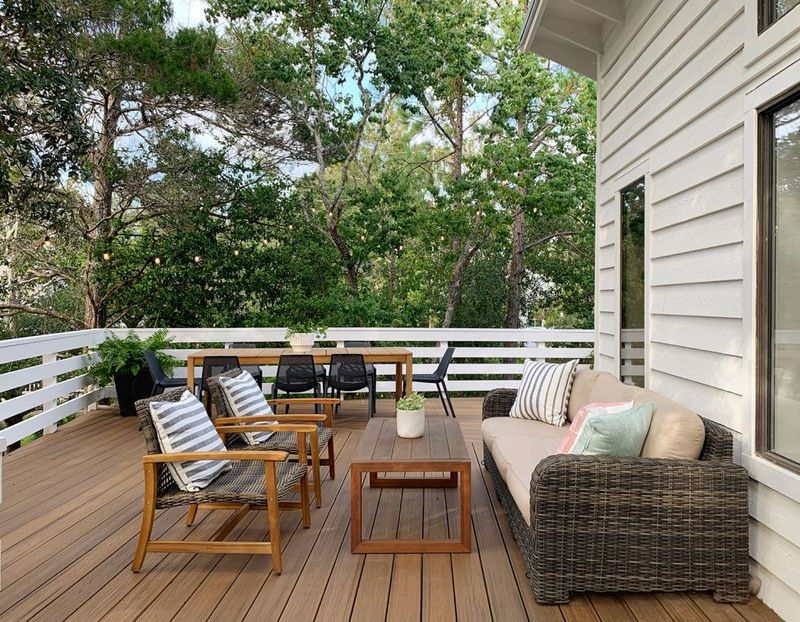
Haphazardly collected porch furniture makes designers visibly wince. When pieces clash in style, scale, or color, the porch looks disjointed rather than thoughtfully designed, regardless of how nice each individual piece might be.
Creating cohesion doesn’t mean everything must match perfectly. Designers often mix materials while maintaining a consistent color palette or choose varied pieces within the same design style. The key is intentionality each piece should feel purposefully selected.
If your budget doesn’t allow for a complete furniture overhaul, try unifying existing pieces with matching cushions or a fresh coat of paint. Small accessories like pillows, lanterns, or planters in coordinating colors can also help tie disparate furniture styles together.
6. Poor Lighting
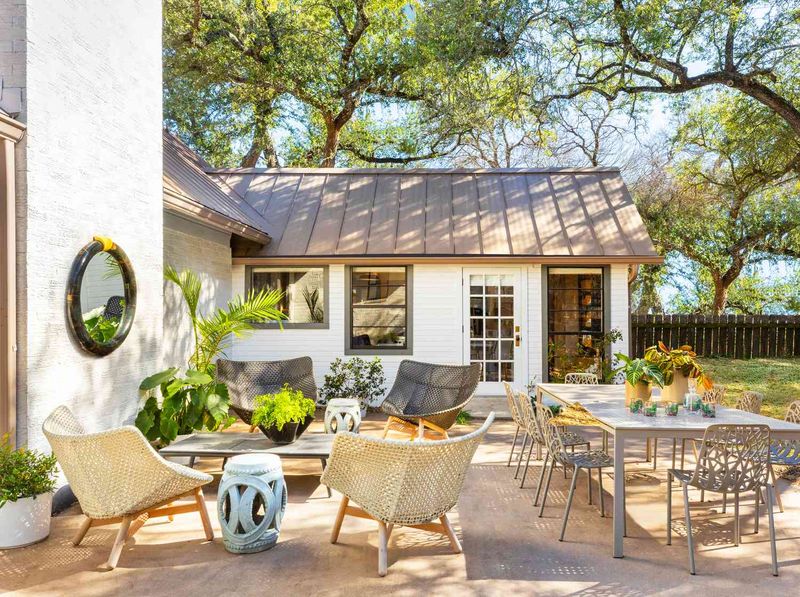
Inadequate porch lighting makes designers immediately notice missed potential. Many homeowners install a single overhead fixture and call it done, creating harsh shadows and limiting how the space can be used after sunset.
Professional designers approach porch lighting in layers. Ambient lighting provides overall illumination, task lighting brightens specific areas like reading nooks, and accent lighting highlights architectural features or plants. This thoughtful combination creates both functionality and atmosphere.
Solar-powered options have revolutionized porch lighting design. Without needing complex wiring, you can add string lights, path markers, or spotlights almost anywhere. These eco-friendly solutions extend your porch enjoyment well into evening hours while highlighting your home’s best features.
7. Unlevel Decking
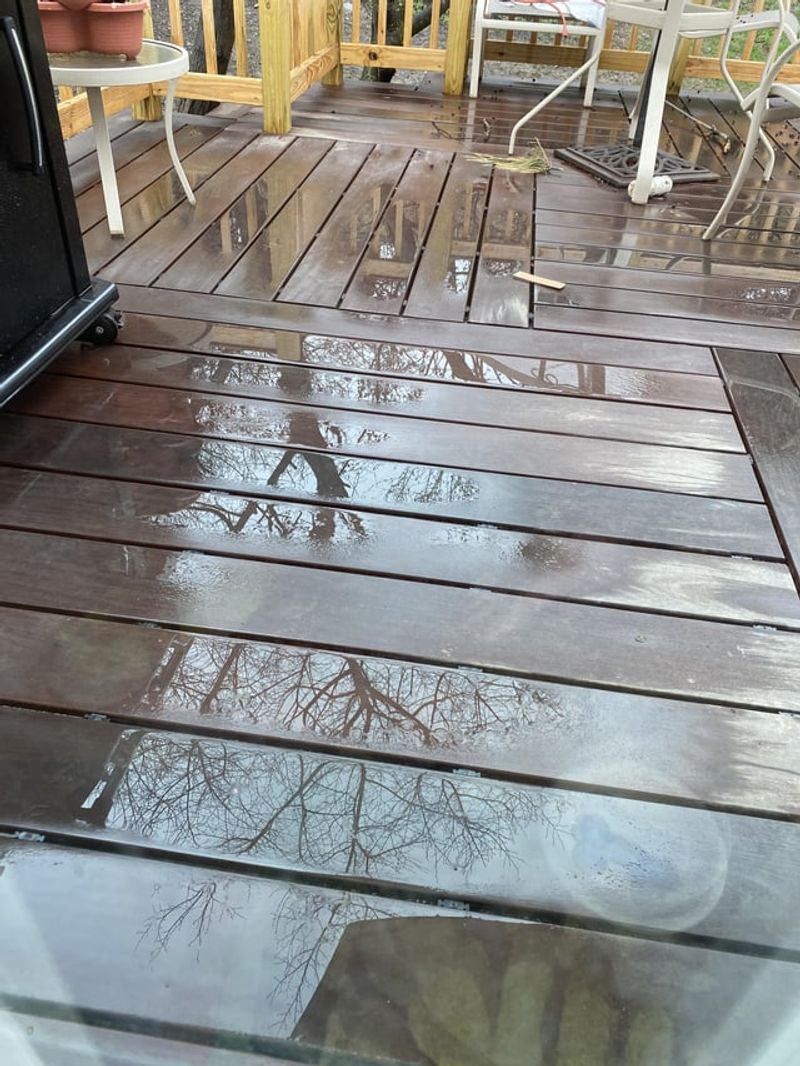
Wobbly furniture and pooling water on uneven porch surfaces drive designers absolutely crazy! Unlevel decking isn’t just an aesthetic problem it creates safety hazards and accelerates wood rot by preventing proper drainage.
This issue often stems from poor initial construction or foundation settling over time. Professional designers always check for proper slope (about 1/4 inch per foot away from the house) when evaluating porches, as this subtle grade allows water to run off rather than collect.
If your porch has developed low spots, consult a professional before problems worsen. Minor unevenness might be corrected by shimming or jacking up sections, while major issues may require partial rebuilding. Either way, addressing this flaw protects your investment and improves both safety and appearance.
8. Hammocks With Clean Lines

Designers absolutely adore modern hammocks that combine relaxation with architectural appeal. Unlike their bulky, rope-heavy predecessors, today’s designer hammocks feature sleek frames, minimal hanging hardware, and sophisticated fabric choices that complement rather than dominate porch aesthetics.
The visual lightness of these contemporary hammocks makes them perfect for smaller porches where traditional options would feel overwhelming. Many designers select neutral canvas or weather-resistant performance fabrics that coordinate with existing color schemes while providing necessary durability.
Have you noticed how these streamlined hammocks create an instant resort vibe? Their presence signals leisure and relaxation without the visual clutter. For maximum designer appeal, look for models with slim metal frames or wall-mounted options that can be easily folded away when not in use.
9. Cozy Wicker Chairs
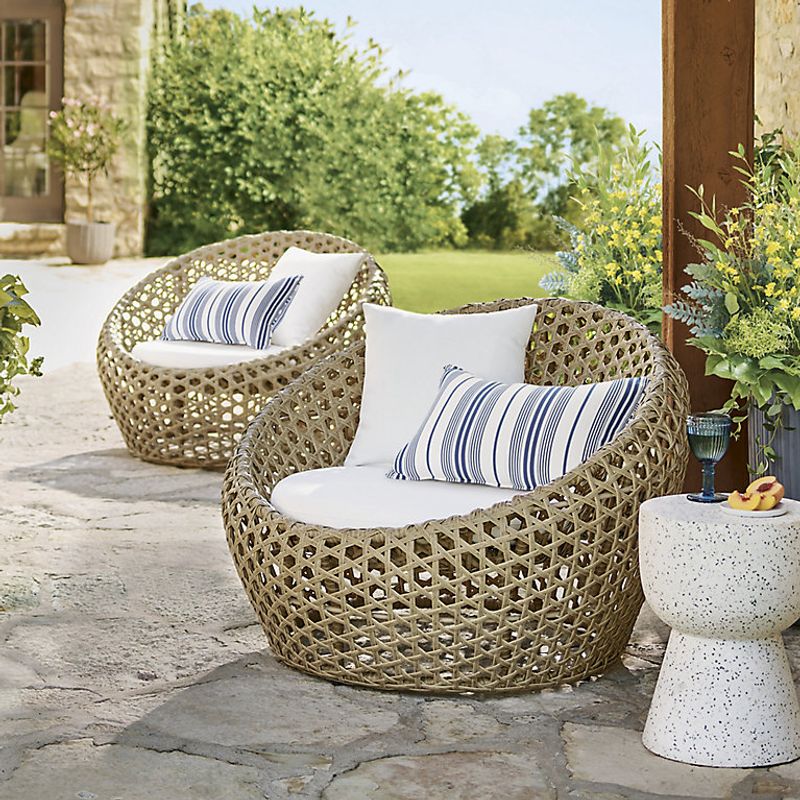
Designers frequently reach for high-quality wicker chairs when creating inviting porch spaces. Modern versions made from synthetic materials offer the classic wicker look without traditional rattan’s maintenance headaches, making them both beautiful and practical.
The texture these chairs bring to a porch design is unmatched. Their woven surfaces create visual interest against smooth house exteriors and wooden floors, adding depth without overwhelming the space. Designers particularly love egg-shaped or curved wicker chairs that create cozy, enveloping seating areas.
For maximum design impact, pair wicker chairs with contrasting elements like sleek metal side tables or geometric outdoor pillows. This juxtaposition of textures creates the layered, collected look that professional designers strive for when creating outdoor living spaces that feel both sophisticated and welcoming.
10. Symmetrical Planter Arrangements
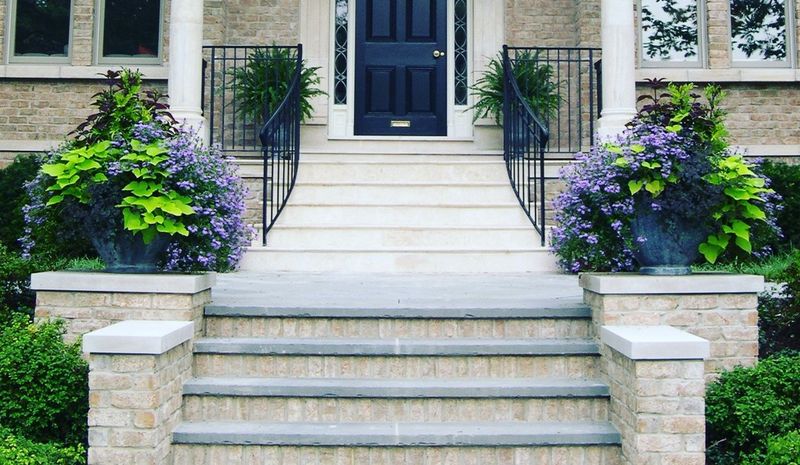
Matching planters placed symmetrically make designers’ hearts sing! This classic approach brings instant order and intentionality to porch designs, creating a welcoming entrance that feels polished and thoughtfully planned.
Professional designers often place identical planters on either side of front doors or porch steps. This balanced arrangement draws the eye naturally toward the entrance while framing architectural features. The plants inside can be identical for formal settings or complementary for more relaxed designs.
Scale matters tremendously with symmetrical arrangements. Designers select planters proportional to the porch size too small and they disappear visually, too large and they overwhelm the space. The perfect symmetrical planter setup creates that satisfying sense of harmony that makes both designers and homeowners smile.
11. Soft Outdoor Rugs
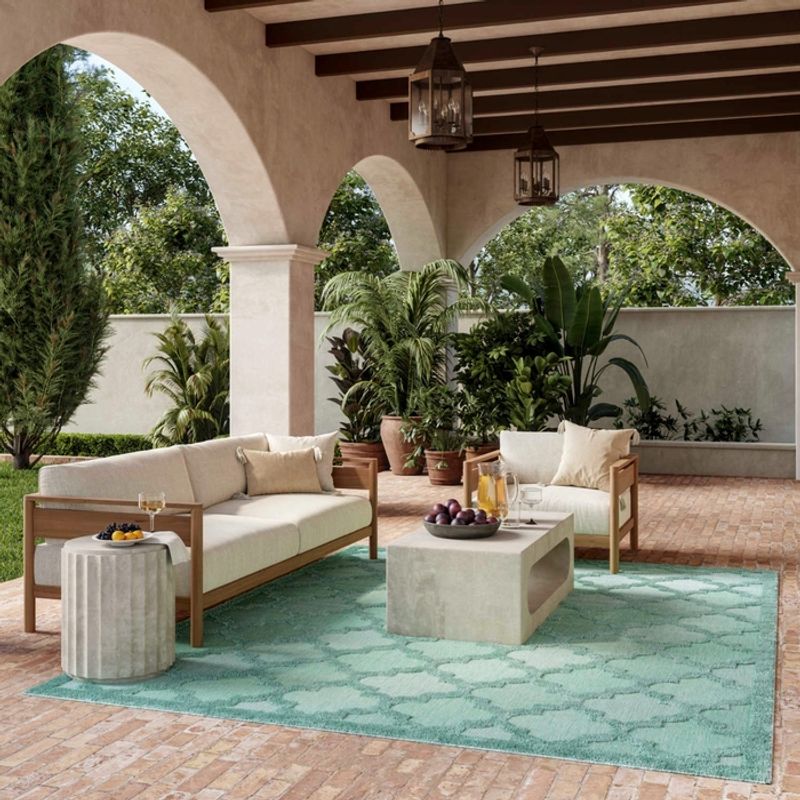
Luxuriously soft outdoor rugs that can withstand the elements have designers absolutely raving. These textile innovations bring indoor comfort to outdoor spaces, completely transforming how porches feel underfoot.
Made from advanced synthetic materials, these rugs resist fading, mold, and moisture while maintaining a surprisingly plush texture. Designers love using them to define seating areas and add color without permanent commitment. Many homeowners are shocked at how much cozier their porch feels with this simple addition.
When selecting soft outdoor rugs, designers recommend bold patterns that hide inevitable dirt between cleanings. Geometric designs remain particularly popular, creating visual interest while maintaining a contemporary feel. For maximum impact, choose a rug large enough that all furniture legs rest on it, creating a unified seating area.
12. Elegant Porch Swings
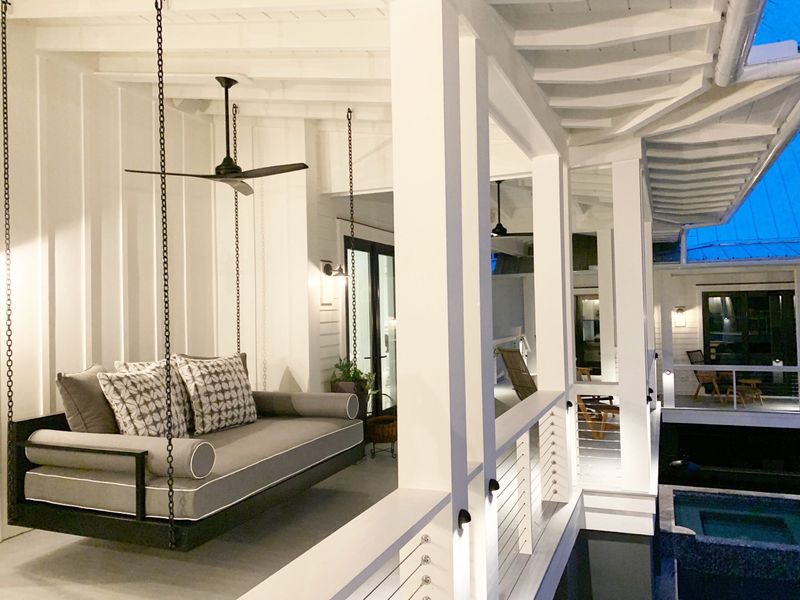
Modern porch swings with architectural presence make designers swoon with delight. Unlike the chain-hung wooden benches of yesteryear, today’s designer swings feature clean lines, unexpected materials, and innovative hanging systems that elevate them to statement pieces.
Designers particularly love swings that appear to float on nearly invisible cables or slim metal frames that create visual lightness. Materials like powder-coated aluminum, weather-resistant hardwoods, and performance fabrics ensure these pieces remain beautiful despite exposure to the elements.
The placement of these swings matters tremendously to designers. Rather than centering them on the porch, professionals often position swings to frame a particular view or create conversation areas with other seating. This intentional placement transforms swings from mere nostalgia pieces to functional art that enhances the entire porch design.
13. Minimalist Lighting Fixtures
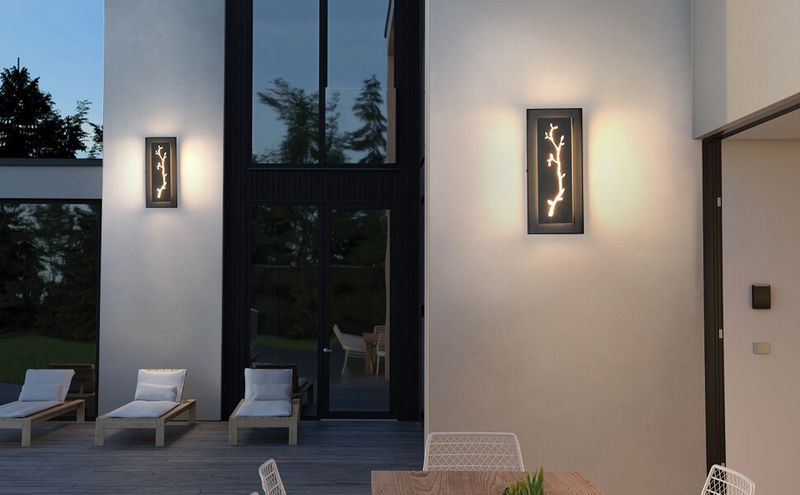
Sleek, architectural lighting fixtures have become designer favorites for elevating porch aesthetics. These minimalist pieces make bold statements without visual clutter, often featuring simple geometric forms in matte black, brushed brass, or other contemporary finishes.
Designers appreciate how these fixtures create dramatic light patterns on porch surfaces. Many feature directional elements that cast interesting shadows, turning plain walls into textured canvases after dark. Unlike ornate traditional fixtures, these clean-lined options complement virtually any architectural style.
Scale plays a crucial role in selecting minimalist lighting. Designers often choose oversized fixtures that make a statement during daylight hours, even when not illuminated. This approach treats lighting as sculpture rather than merely functional, adding artistic elements to porch designs that feel thoroughly modern and intentionally curated.

